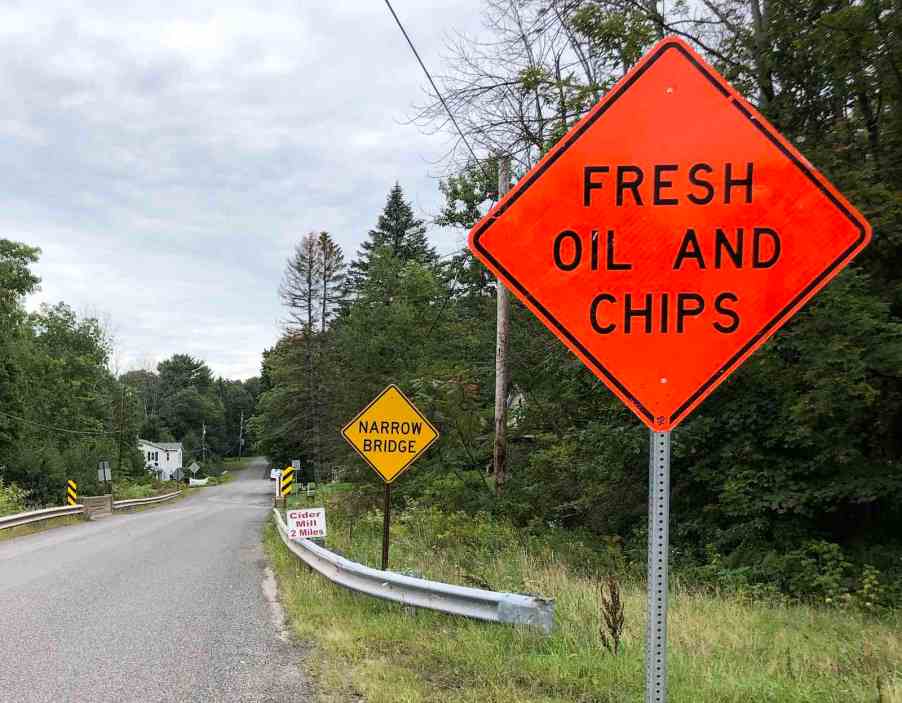
No, ‘Fresh Oil and Chips’ Road Signs Aren’t Advertising for an Upcoming Restaurant
I was enjoying a spirited drive through rural Pennsylvania when I saw a road sign that made me do a double-take. It was an orange diamond warning, “Fresh Oil and Chips.” No, it isn’t an advertisement for a nearby restaurant. It is a warning that you might encounter loose stones where you wouldn’t normally expect it, because of a road re-surfacing treatment that has residents divided.
Other names for this resurfacing treatment are “chip seal” and “oil and stone.” To make a long story short, it is an inexpensive way to lay down a road surface, but the end result will not last as long as traditional asphalt. It can also be dangerous for motorcyclists and damage car paint.

Road asphalt–alternatively called blacktop, tarmac, pavement, and macadam in some places–is a mix of tar and fine gravel (stone chips). The stone provides structure while the tar is the binding agent holding it to the road’s surface.
Highway engineers have discovered an ingenious alternative to cover more road surface: you spread a very thin layer of tar–also called oil–on the existing asphalt, smoothing over holes and cracks. Then you spread a layer of fine gravel–also called stone chips–on top of the tar. Finally, you compact the entire surface repeatedly with a heavy roller, so the stone chips will stay in place. You might think of this clever solution as “deconstructed asphalt.”
No matter how well you compact the entire thing, the stones will eventually break free and the surface will deteriorate faster than regular asphalt. But there’s another problem with it too. When a redditer asked the forum about “Fresh Oil and Chips” signs a highway engineer shared the scoop.
Many departments will lay down this “chip seal” then roll over it just once to compact it, but count on traffic to do the rest of the work. When they do this, the “paved” road surface will include loose gravel for a while. This unexpected surface on a paved road could damage car paint and be dangerous for motorcycles. Thus the “Fresh Oil and Chips” signs.
The engineer revealed towns with more money in their road budget avoid this method. If you have money for a longer-term solution, it is usually the better investment. And rich towns not only have bigger budgets, but they have residents with expensive cars who don’t want to damage their paint.
Next, see why the DOT ‘strongly recommends’ states refrain from humorous highway signs, or watch a motorcyclist navigate a “Fresh Oil and Chips” road in the video below:



